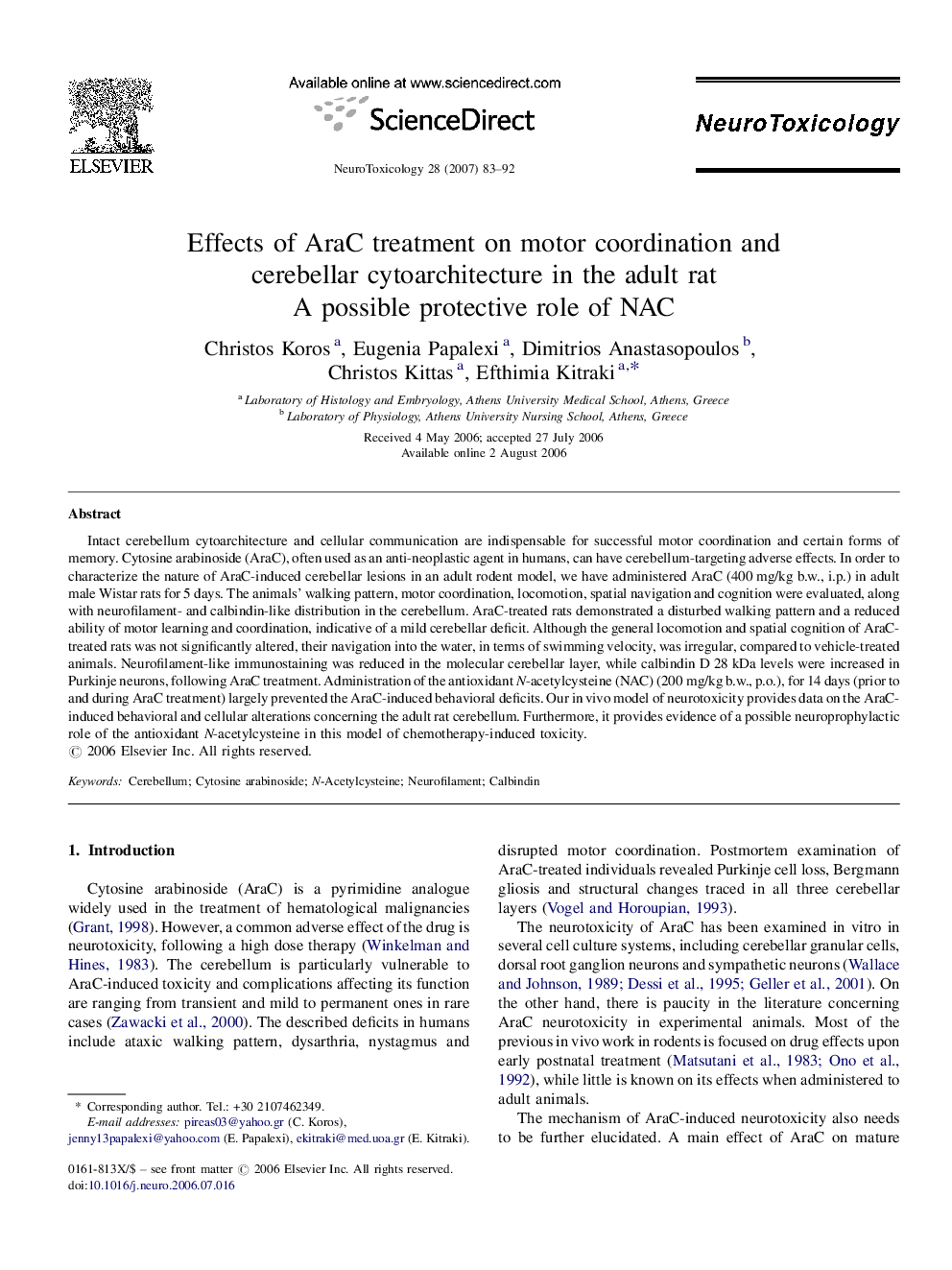| Article ID | Journal | Published Year | Pages | File Type |
|---|---|---|---|---|
| 2590497 | NeuroToxicology | 2007 | 10 Pages |
Intact cerebellum cytoarchitecture and cellular communication are indispensable for successful motor coordination and certain forms of memory. Cytosine arabinoside (AraC), often used as an anti-neoplastic agent in humans, can have cerebellum-targeting adverse effects. In order to characterize the nature of AraC-induced cerebellar lesions in an adult rodent model, we have administered AraC (400 mg/kg b.w., i.p.) in adult male Wistar rats for 5 days. The animals’ walking pattern, motor coordination, locomotion, spatial navigation and cognition were evaluated, along with neurofilament- and calbindin-like distribution in the cerebellum. AraC-treated rats demonstrated a disturbed walking pattern and a reduced ability of motor learning and coordination, indicative of a mild cerebellar deficit. Although the general locomotion and spatial cognition of AraC-treated rats was not significantly altered, their navigation into the water, in terms of swimming velocity, was irregular, compared to vehicle-treated animals. Neurofilament-like immunostaining was reduced in the molecular cerebellar layer, while calbindin D 28 kDa levels were increased in Purkinje neurons, following AraC treatment. Administration of the antioxidant N-acetylcysteine (NAC) (200 mg/kg b.w., p.o.), for 14 days (prior to and during AraC treatment) largely prevented the AraC-induced behavioral deficits. Our in vivo model of neurotoxicity provides data on the AraC-induced behavioral and cellular alterations concerning the adult rat cerebellum. Furthermore, it provides evidence of a possible neuroprophylactic role of the antioxidant N-acetylcysteine in this model of chemotherapy-induced toxicity.
